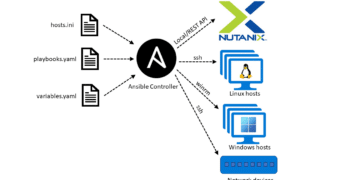Microsegmentation, A secure and agile wall around your most valuable assets
Introduction
In today’s world where every little thing is connected to the web and everything is interconnected, securing computer networks is of very importance to protect the sensitive customer information and prevent unauthorized access. One effective strategy is to segment the network. This approach involves dividing the network in small and isolated segments to minimize the impact if a security breach occurs. This approach also limits the movement between the segments of the attackers. Segmentation can be done in two ways, a physical approach as in network segmentation and a software approach as in microsegmentation. In this blog we will take a look at microsegmentation, what it is and what are the benefits of implementing it.
What is network segmentation?
Before we start with explaining what microsegmentation is and what its benefits are, we first take a small detour to explain and understand what network segmentation is. Network segmentation is the process of splitting the network into smaller subnetworks. Each subnet works independent with its own policies and security. This segmentation helps mitigate the risk of unauthorized access and reduces the potential impact of an attack. Network segmentation is configured with switches and firewalls to secure the network.
What is microsegmentation?
Microsegmentation is the next step of segmenting the environment for better security and understanding of the network. As network segmentation, microsegmentation is an application and data focused segmentation that divides the network into smaller isolated segments and limits lateral movement of threats within the network. Microsegmentation is unlike the traditional perimeter and hardware-based security because it grants the organisation the ability to segment the environment on a data and application level. Each defined segment acts as an independent security zone which minimizes the potential impact of a breach and it also enables control over the network traffic in an environment.
We need to think about network like an office building, if only the front door is secured and an unauthorized person somehow gets access, that person has access to the whole building and its valuables. With segmentation enabled it’s like we add a key card security measure to every door in the building. If you want to enter or exit you need to have the correct clearance. So if somehow someone gets through the first door, he still cannot enter the other rooms without the right security clearance.
The biggest benefits of microsegmentation is of course enhanced security but there are other benefits. One very important benefit is that segmentation can help with compliance and regulatory requirements. Industries like the government and health care need to comply to very strict regulatory requirements. Microsegmentation can assist with meeting these requirements by securing the most sensitive data by making that segment very secure with policies and restricting who can access it. Another benefit that comes with microsegmentation is granular access controls. With this organizations can define specific access policies for segments based on user roles, application, ports and protocols. This creates a zero-trust approach where users and applications are only granted access to the resources that they need. This minimizes the risk and impact of a breach. Microsegmentation makes monitoring much easier and more efficient. By dividing the network into smaller more manageable segments, IT administrators can focus on the specific segment and implement the security measures effectively. Also troubleshooting a segment instead of the whole environment is much more effective and efficient.
Implementing microsegmentation
Before implementing microsegmentation there are some steps that need to be taken before we can start. The first step is to identify the segments. We need to analyse the network architecture and identify the critical components, sensitive data and systems that need more protection. Factors such as data classification and regulatory requirements must be considered. Tools that vendors provide can help with this, for example Security central from Nutanix.
Next step before implementing is to define the zones. Once the segments have been identified, they need to be categorized into security zones based on the level of security needed.
There is also a need of access controls. This involves defining the networks, creating labels and descriptions for applications and user groups and creating the segments with the correct configuration. After taking the correct steps microsegmentation can be applied.
Regularly monitoring and updating your network segmentation strategy is a must. Periodically review access controls, adjust security policies, and ensure that segmentation remains effective. Changes, such as new user groups or applications, should be assessed for their impact on the existing segmentation scheme.
Conclusion
As a conclusion, I can end this blog with the thought: Microsegmentation is a vital step that needs to be taken in these hostile times. Microsegmentation concentrates on the application level and there it minimizes the impact and ensure that your most precious data is safe from attackers. For my next blog I will go one step deeper in Microsegmentation of Nutanix and how it is implemented. Stay tuned!

